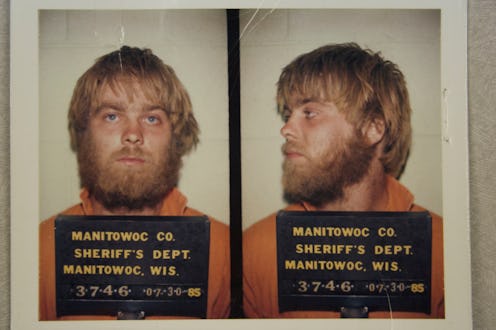
The end of 2015 is delivering on the true crime front. Not only do enthusiasts have a new season of Serial to listen to and pore over for the next several weeks, Netflix is also premiering a new in-depth true story documentary called Making A Murderer. (Trigger warning for discussion of violence and sexual assault.) Its subject is a Wisconsin resident named Steven Avery who served 18 years in prison for a rape that was eventually linked to another man with DNA evidence. After his release, he brought a civil suit against the institutions that convicted him for the rape with what he claimed was insufficient evidence. But, in 2005, Avery saw the inside of a courtroom again when he was charged and later convicted for the murder of missing photographer Teresa Halbach. It's a case that plays out like a Hollywood thriller, but the twists and turns of Making A Murderer are based in hard fact.
The 10-part series will drop in its entirety on Dec. 18, and the streaming service must be hoping for the kind of viral spread that HBO experienced with the Robert Durst documentary, The Jinx . Will Steven Avery's story become a subject of national conversation like that of Durst and Serial Season 1 subject Adnan Syed? The particulars of his case are as engrossing as either of theirs, and just as unbelievable. The following facts about the Making The Murderer case may sound like fiction, but they are very real.
Avery Was Charged With Halbach's Murder On The Same Day A Bill Was Passed That Was Meant To Carry His Name
The New York Times reported in 2005 that a bill carrying changes to "the way [Wisconsin] police draw up eyewitness identification procedures, conduct interrogations and hold onto DNA evidence" would no longer be named for Steven Avery. Representative Mark Gundrum, an advocate for the bill, said, "The legislation is very important and very sound for our justice system as a whole, but [Avery's charge] does detract a little bit." The bill was signed into law under the title of "Criminal Justice Reforms."
Avery Was Exonerated Of Penny Beerntsen's Rape With The DNA From A Single Pubic Hair
In Unreasonable Inferences, his book about Avery's wrongful conviction, author and attorney Michael Griesbach details the DNA matching process that overturned the court's decision with a literal shred of evidence. An except from the book appeared in the Wisconsin magazine Isthmus in 2011:
On a warm summer night in 1985, a nurse had retrieved 13 loose pubic hairs from Penny Beerntsen's body, any of which could have been left behind by her assailant. Now, 18 years later, the lab analyst observed that only two of the hairs contained a sufficient amount of DNA for testing. The DNA from one of the hairs matched Penny Beerntsen, but the DNA from the other one matched neither Penny nor Avery.
The DNA from that single strand did match convicted sex offender Gregory A. Allen, who had previously threatened a woman on the same beach where Beerntsen was attacked.
After His Release, Avery Allegedly Occasionally Expressed A Wish To Return To Prison
In his book, Griesbach quotes a 2003 article from The Milwaukee Journal in which Avery allegedly became nostalgic about his time inside. "Sometimes, I feel like it's easier in there ... Some days, just put me back there, get it all over with." Avery allegedly said shortly after his release from prison in 2003.
Avery's Nephew Later Recanted His Testimony About Halbach's Murder & Claimed To Have Embellished It With The Plot Of A Book He'd Read
Prosecutors convicted Avery's nephew Brendan Dassey (who was 16 at the time) of being "party to first-degree intentional homicide, sexually assaulting Halbach and mutilating her corpse." Dassey confessed to the act in a videotaped interview. Dassey and his defense team later accused the police of coercing him to give the testimony. "They just kept like asking the questions over and over until they got the answer," Dassey said in 2007. GMToday reports that "Dassey then testified he lied to investigators and took some of the details [of his confession] from a book he read several years ago." Despite his claims, Dassey's appeal failed in 2013, and he's still in jail.
Watch the trailer for Netflix's Making Of A Murderer below, and log in on Dec 18 to stream the series.
Image: Netflix